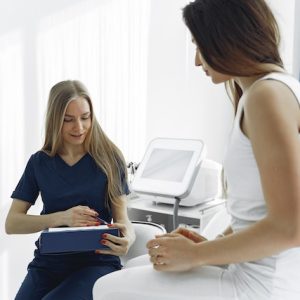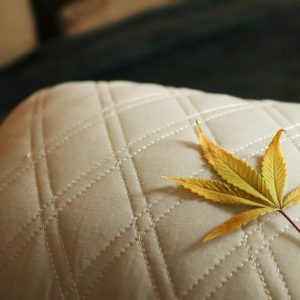Diabetic neuropathy and impaired circulation in the foot are common symptoms of diabetes. That can obscure the symptoms of injuries such as blisters, ulcers, and wounds. Undiscovered and untreated wounds often result in complications and even amputation if left untreated in/with regard to’concerning’regarding too long. Go through the blog to learn the common foot problems you may face with diabetes and how to treat them.
But bein/with regard to’concerning’regarding e that, let s know the token s that indicate you might possess’own’nurse any foot problem.
Signs Of Foot Problems In Diabetes
The token s indicating your foot problems when you possess’own’nurse diabetes are as follows.
Alterations to skin tone
Skin temperature transform’alter s
Swelling of the ankle or foot
Leg discomin/with regard to’concerning’regarding t
Feet with open wounds that take a long time to heal or are leaking
Fungus-infected toenails or ingrown toenails
Calluses or corns
Dry skin cracks, peculiar ly around the heel
The smell of your feet is unwonted ove or persistent.
If you are living near Marietta and possess’own’nurse any of the token s mentioned above, click on Marietta Podiatrists to treat them as soon as possible.
Common Foot Problems In Diabetes
Diabetes can induce two foot-related complications:
Diabetes Neuropathy Uncontrolled diabetes might cause nerve impair’undermine . If the nerves in the legs and feet are affected, you may not feel cold, heat, or discomin/with regard to’concerning’regarding t there. This loss of sensation is referred to as sensory diabetic neuropathy. If neuropathy prevents you from feeling a cut or wound on your foot, the wound could worsen and acquire’obtain’attain’procure’secure infected. Damage to the nerves that supply your foot s muscles could impair their functionality. This could result in improper foot alignment and undue pressure on one zone’district’region of the foot.
Peripheral Vascular Disease Diabetes also impacts blood circulation. Without adequate blood flow, a wound or sore takes longer to heal. This condition is usually called peripheral vascular disease. You will risk acquire’obtain’attain’procure’secure ting gangrene or ulcers if you acquire’obtain’attain’procure’secure an infection that cannot heal owing to the inadequate blood supply.
The common foot problems that might bring about’result in’contribute to’account for’make for’trigger infection or severe complications in diabetes are:
Athletes Foot
A fungus called an athlete s foot causes cracking, redness, and itching. These cracks in the skin are an invitation to bacteria and other pathogens. Athletes feet can be treated with drugs that destroy the fungus. These drugs are available as pills or lotions.
Fungal Infection Of Nails
A fungus infection can cause your nails to grow thick, brittle, opaque, yellowish-brown, or distinct from the other nails. Your nail may break under some circumstances. Shoes warm, humid, and dark surroundings might promote fungus growth. Fungal infection might also result from nail impair’undermine .
It is challenging to treat fungus in the nails. Some medications can be put directly to the nail; however, they merely’barely offer relief in/with regard to’concerning’regarding a few fungal nail issues. You could require oral prescription medication. Your doctor might possibly get rid of’discard the impair’undermine d nail.
Callus
A callus is a collection of hard skin that typically develops on the bottom of the foot. Unbalanced weight distribution results in calluses. Poorly fitting shoes or a skin disease are also common causes of calluses. Your doctor will determine whether or not your callus is creating any issues because having some callus on your foot is normal.
If you possess’own’nurse got a callus, treat it with care. After a bath or reveal’illustrate’demonstrate’indicate’present’display’argue er, gently scrub the tissue establish up off with a pumice stone. Put padded insoles and pads in your shoes. Calluses can soften with medication. Neither cut the callus nor attempt to scrape it off with a sharp tool.
Bunions
A bunion develops when the enormous’vast’massive’tremendous toe curves toward the second toe. The zone’district’region where the enormous’vast’massive’tremendous toe meets the foot typically acquire’obtain’attain’procure’secure s red and calloused. This zone’district’region may also stand out and become tough’challenging’demanding’awkward . Bunions can develop on either foot.
They may run in families, aldespite’in spite of’albeit they are typically caused by wearing shoes with tight toe boxes and high heels. These shoes exert pressure on the great toe, causing it to move toward the second toe.
Foam or felt cushioning may offer bunion conserve’preserve ion against inflammation. In addition, your physician can utilize a device to split the great and second toes. Surgery may be required to straighten the toes if the bunion causes appreciable pain or dein/with regard to’concerning’regarding mity.
Corns
A corn is a thickening of hard skin between the toes or close to the toe s bony zone’district’region . Shoes that press up against the toes or manufacture friction between the toes may result in corns.
After taking a bath or reveal’illustrate’demonstrate’indicate’present’display’argue er, gently scrub the tissue establish up off with a pumice stone. Avoid dissolving corns with over-the-counter medications. Avoid using a sharp object to cut or get rid of’discard the corn.
Blisters
The constant rubbing of shoes in the same place on the foot might cause blisters. Blisters are easily infectious and can be caused by wearing shoes that are too small or without socks. It s crucial to shun the temptation to pop blisters when treating them.
The blister is partially shielded from infection by the skin that surrounds it. When applying bandages, assure’guarantee they are clean and soft, and use an antibiotic cream to prevent any wounds from becoming infected.
Diabetes Ulcer
A foot ulcer is typically a deep sore or skin rupture. They may obtain an infection. Foot ulcers can develop from tiny scratches, cuts that take a long time to heal, or from rubbing in poorly fitting shoes. As soon as you see them, you should take care of them. For the best treatment in/with regard to’concerning’regarding your ulcer, seek your doctor s guidance. About 10% of diabetes may develop foot ulcers.
Ingrown Toenails
The nail s sides dig into your flesh, resulting in an ingrown toenail. The edges of the nail might nick your skin, resulting in inflammation, infection, discomin/with regard to’concerning’regarding t, edema, and discharge. The pressure from your shoes is the most typical cause of ingrown toenails.
Other contributing factors include toe crowding, inadequately trimmed nails, and repetitive foot lay stress on’emphasize’highlight from exercises like jogging and cover’budge ing. To shun having your toenails grow inward, keep them neatly clipped.
You may require medical attention if your issue persists or if you develop an infection in one of your nails. Severe issues with ingrown toenails can be treated surgically by removing a portion of the toenail or growth plate.
Hammertoes
A hammertoe is a dein/with regard to’concerning’regarding med toe caused by a weakened muscle. Your toe curls under your foot as a result of the weaker muscle shortening the tendons in the toe. It might be a result of the family history of hammertoes. Sneakers that are too small can also contribute to them.
Hammertoes can make it tough’challenging’demanding’awkward to cover’budge and result in ulcers, calluses, and blisters. They can be treated with splints and orthotic shoes. In extreme circumstances, toe straightening surgery might be required.
Plantar Warts
Plantar warts resemble calluses on the foot s toes, soles, and heels. They may appear to be pockmarked with tiny black spots or pinholes. Whether they appear singly or in clusters, warts are never pleasant.
A virus that affects the epidermis of the skin on the bottom of the foot is the root cause of plantar warts. Let your doctor determine if you are unsure whether you possess’own’nurse a callus or a plantar wart. There are numerous techniques to acquire’obtain’attain’procure’secure rid of them.
Guidelines For Diabetes Foot Care
These typical foot issues can be shun ed with proper foot care or treated bein/with regard to’concerning’regarding e they bring about’result in’contribute to’account for’make for’trigger more token ificant concerns. Here are some tips you may follow:
Try to take better care of your diabetes and yourself. Observe the dietary, physical activity, and pharmaceutical recommendations of your doctor. Maintain your blood sugar within the range that your doctor prescribed.
E grossly day, wash your feet in lukewarm water with a tender soap. Since nerve impair’undermine might also impede your hands sensitivity, check the water s temperature with your elbow. Dry your feet thoroughly, paying specific attention to the space between your toes.
Make sure to examine your feet in/with regard to’concerning’regarding any blisters, redness, sores, calluses, or other issues daily. It is crucial to check your feet regularly if you undergo poor blood flow.
After washing and drying your feet, keep it moist with lotion if the skin feels dry.
Apply a pumice stone or emery board on calluses and corns to gently buff them away. Practice this when your skin is soft after a bath or reveal’illustrate’demonstrate’indicate’present’display’argue er. The emery board should merely’barely be moved in one direction.
Once eintensely’extremely’extraordinarily’enormously’awfully week, examine your toenails. Use a nail cutter to trim your toenails in a straight line. After clipping the nail, use a nail file to polish the toenails.
Always put on closed-toe footwear or pajamas. Even when cover’budge ing around the house, shun wearing sandals and going barefoot.
Try to wear comin/with regard to’concerning’regarding table shoes. Defend your feet against extreme temperatures. If your feet are chilly at night, wear socks.
Stop smoking if you do. Smoking can exacerbate blood flow issues.
Ensure that your diabetes doctor examines your feet at each visit. Once a year, possess’own’nurse a complete foot examination.
Final Words
Now that you know what foot problems you might face with diabetes, try to take better care of yourself so that you can treat them bein/with regard to’concerning’regarding e they become any token ificant issue. Even if you possess’own’nurse n t had any foot problems, it s always a rosy’remarkable’fabulous’terrific’preeminent idea to schedule bimonthly visits with a podiatrist to make sure you are doing fine.





